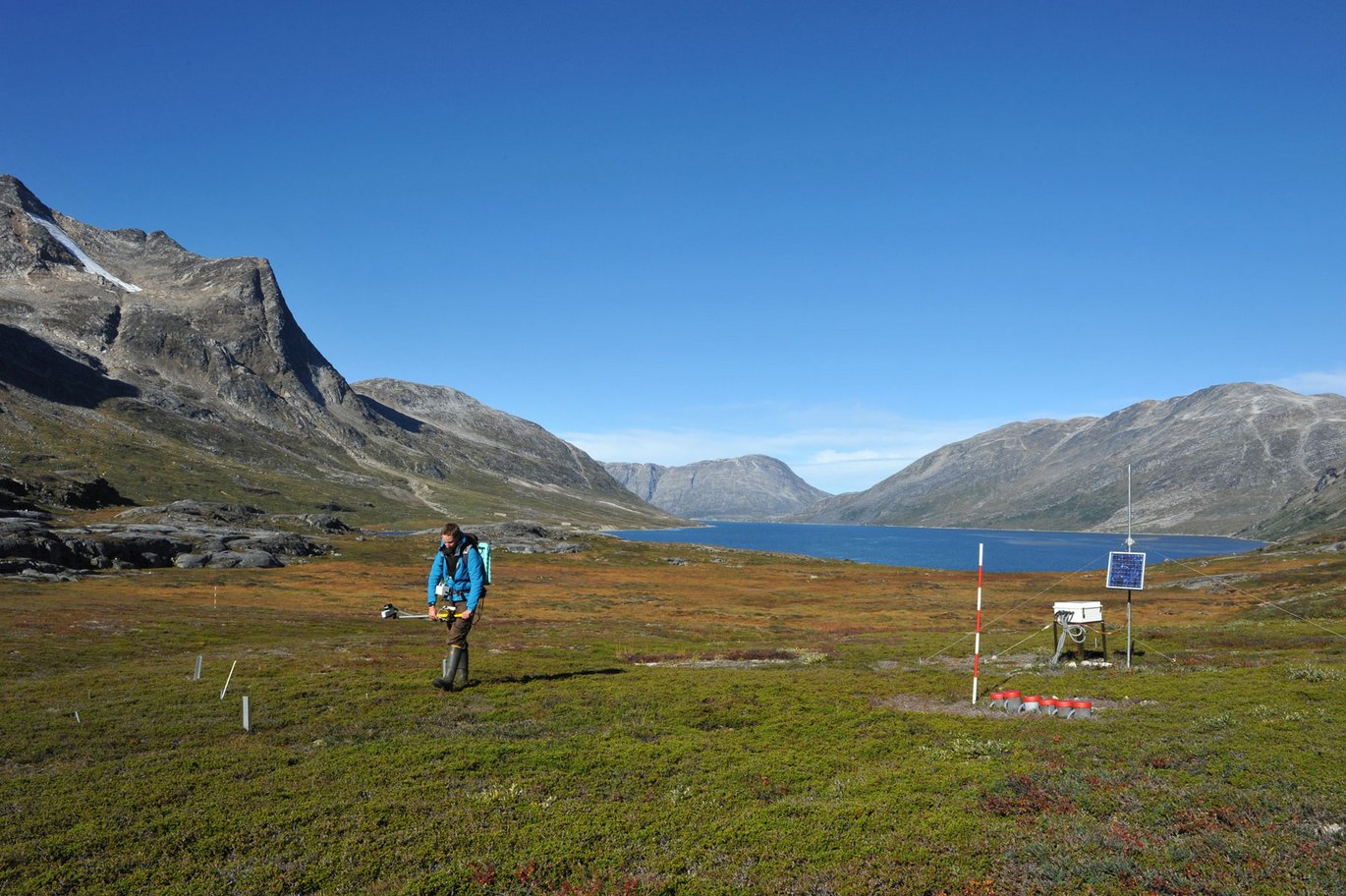Scientist of the Month - May

The scientist of the month, Katrine Raundrup has been a researcher for several years, focusing on large terrestrial mammals and their habitats. Her interest in the Arctic was triggered by lectures on arctic and polar sciences when she was a student at University of Copenhagen. This led her into doing her masters on muskoxen in Kangerlussuaq and, later during her PhD at Aarhus University, to work on caribou north of Nuuk. Following her master degree, she moved to Greenland in 2006, where she started working for GEM in 2008 and got a position at the Greenland Institute of Natural Resources in 2009. She the local manager of GEM BioBasis Kobbefjord as well as the INTERACT station manager of the site and facilities in Kobbefjord.
Conducting fieldwork for GEM on a regular basis has given her many great memories, including close encounters with both muskoxen and caribou in the Kangerlussuaq inland. For her in the recent years one particular experience stands out: Last year, together with Torben Lauridsen (Aarhus University) she confirmed the presence of a new aquatic plant species in one of the monitored lakes, Badesø, in Kobbefjord. Though the species was not new in the Arctic, it had never been found in Badesø before.
To aspiring students she has the message: “Don’t be afraid to go to the Arctic for studies and fieldwork – it is just as cool as you think!” Even though going to, living in and doing research in the Arctic is expensive, that should not discourage people from going. She hopes that Kobbefjord will be able to attract more students and researchers, following both passion and interest, to fill in the yet existing knowledge gaps.
While working in the Arctic comes with its own pleasures, for Katrine working for GEM is especially valuable because of its responsibility for long-term monitoring in the Arctic. As GEM is “in it” for the long run, long-term monitoring gives rise to the ability to better understand the effects of climate change first-hand. For that, “I hope that in the future we will be able to upscale the data from all GEM-sites and associated locations, and that funding for Arctic monitoring and research maintain the continuous sampling, providing managers and governments with the most up to date knowledge on the state of the Arctic.”